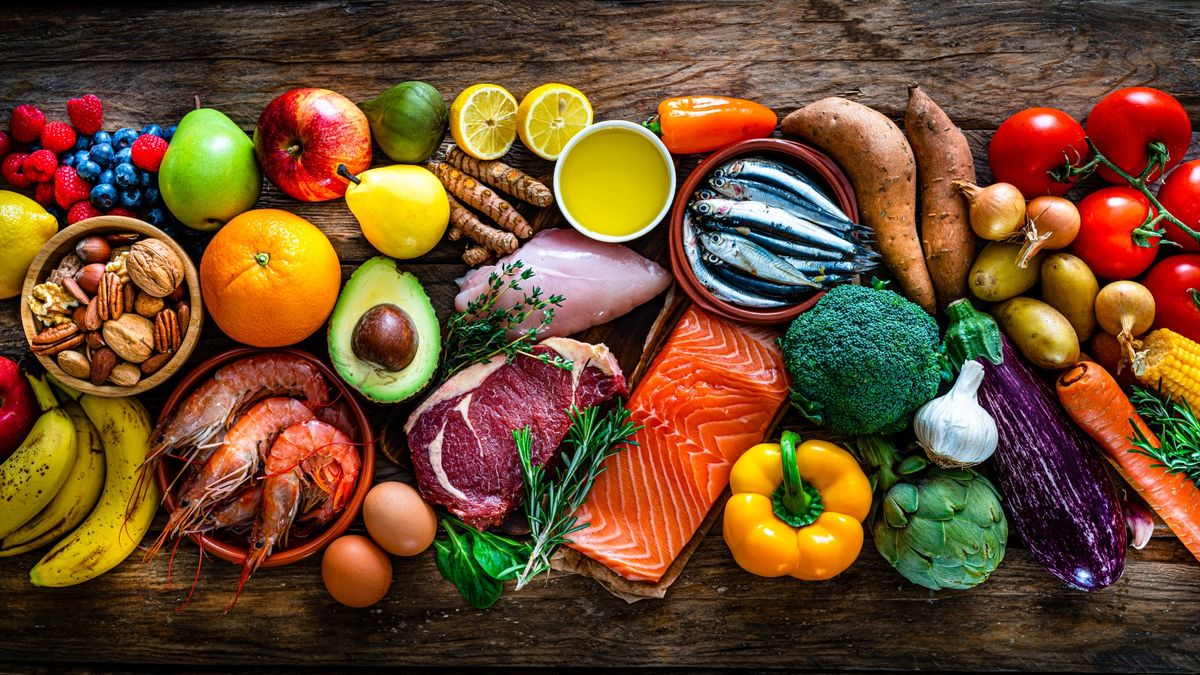the paleo diet It is inspired by the eating habits of our hunter-gatherer ancestors, becoming in recent years a popular diet for weight loss and a more natural way of eating. Using the paleo diet for weight loss is effective primarily due to the unprocessed nature of the foods it encourages you to consume, which are often naturally low in sugar, salt, and saturated fat.
The diet eliminates most grains, legumes, potatoes, and dairy products, and relies heavily on fresh fruits and vegetables, nuts and seeds, lean meat, and fish. As a result, the paleo diet is quite low in carbohydrates and has a slightly higher risk of calcium deficiency due to the lack of dairy products.
While it may seem like a good idea to “go back to our roots” and eat like early humans did, how practical is the paleo diet for weight loss in a modern sense? With a wider range of foods at our disposal than our ancestors did, what benefits might we gain from restricting ourselves to a diet based on ancient practices? We asked the experts.
What is the paleo diet?
The paleo diet shifts the focus away from starchy foods like grains, legumes, potatoes, and foods made from these ingredients (pasta, bread, chips) and encourages you to base your meals on a lean protein source.
Dr. Nurisa Kumaran, Medical Director and Founder of Elementary Health Clinic (opens in a new tab), tells us that the paleo diet focuses a lot on eating ‘natural’ foods. “The paleo diet, also known as ‘the caveman diet,’ focuses on eating lean, grass-fed meat, fish, fruits, and vegetables,” she says. “This means you should eliminate processed foods and most dairy products, and instead eat a diet rich in nuts, seeds, fruits, lean meat, such as lamb and chicken, and omega-3-containing fish, such as salmon and mackerel”.
The paleo diet may be helpful for people who are obese or diabetes, due to the reduction of highly processed foods and reliance on lean meats and vegetables. A study of International Association for the Study of Obesity (opens in a new tab) indicates that the hunter-gatherer lifestyle and diet contributes to excellent cardiovascular and metabolic health.
Does the paleo diet help you lose weight?
Due to the protein-rich nature of the paleo diet, those who eat paleo for weight loss may find they have a higher rate of success due to the feeling of fullness associated with eating protein, according to a study by British Journal of Nutrition (opens in a new tab).
In addition to protein, the paleo diet is full of high-fiber foods like nuts, seeds, and vegetables, which are also great for increased satiety, according to a study in Nutrition Reviews (opens in a new tab). Fiber It’s a bulking agent that slows stomach emptying, helping you feel full longer, plus it takes longer to break down in your digestive system than low-fiber foods. Feeling full is important in keeping people motivated to maintain eating habits, so the paleo diet could be good for weight loss due to its ability to maintain feelings of satiety and satisfaction.

However, a review in American journal of clinical nutrition (opens in a new tab) indicates that while there was a downward trend in weight and other positive metabolic markers, without the intensive dietary support of a clinical trial, many participants relapsed and stopped following it. This could indicate that the carbohydrate-restricted nature of the paleo diet is not as sustainable without proper nutritional support.
Dr. Kumaran agrees with the benefits of using the paleo diet for weight loss. “So far there has been research to show that the paleo diet may produce greater benefits compared to other diets for weight loss and other associated metabolic health conditions,” he says. Furthermore, a study in European Journal of Clinical Nutrition (opens in a new tab) indicated that the paleo diet may be helpful in supporting people with type 2 diabetes, increasing your sensitivity to insulin over time. Since diabetes is often a secondary condition to obesity, research in this area is promising.
Paleo diet to lose weight: what to eat and tips to succeed
The paleo diet requires you to eat lots of fresh foods and lean meats, so there’s often a little more preparation involved in eating paleo than a traditional Western diet that relies on ready meals and processed foods. Many of us are used to preparing our meals with starchy foods, as advised by the USDA government. dietary guidelines (opens in a new tab)so there may be a learning curve to making your meals paleo-friendly.
Appropriate paleo foods include:
- Oily fish: salmon, mackerel, sardines: rich in brain-supporting fatty acids and lean protein.
- Lean meat: lamb, chicken, turkey – low fat, high in protein and a good base for many paleo meals.
- Cruciferous vegetables: broccoli, cabbage, radishes: high in fiber and rich in vitamins and minerals.
- Nuts and seeds: chia seeds, cashews, pine nuts: rich in calcium to offset the low-dairy nature of paleo and good for snacking.
Kumaran also advises caution when following restrictive diets, such as paleo or keto, despite evidence of positive weight loss trends. “As with all diets that can be restrictive, such as the paleo diet, it’s important to work with a qualified health care professional to ensure you’re not at risk for nutritional deficiencies,” she says.
This article is for informational purposes only and is not intended to offer medical advice.
